



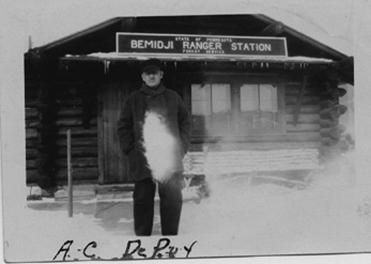
|
Bemidji, Minnesota Ranger Station Around 1930’s |
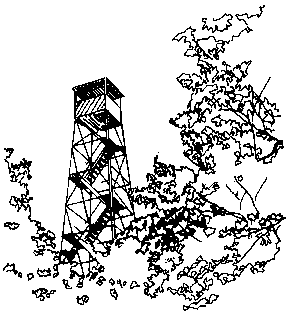
|
Ford model “A” Forest Fire Truck |
|
Ford ( year) 1939? |
|
1. General radio wave meter 2. 2. Circuit Analyzer 3. 3 Portable transceiver. 4. 4 Field strength tester 5. 5 &6 Tower transmitter / receiver. First radio acquired by the MFS were homemade by Mr. Kirkland 1934 |
|
1 |
|
2 |
|
3 |
|
4 |
|
5 |
|
6 |

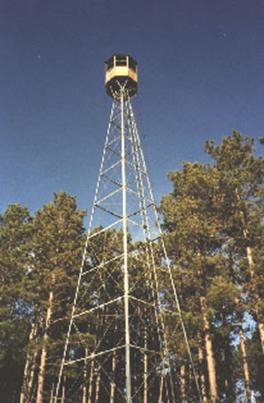
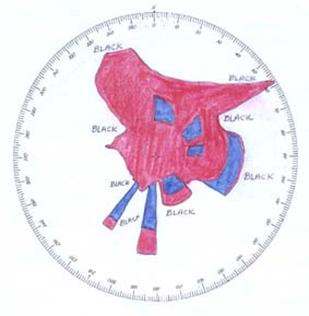
|
La Salle tower, North of Itasca Park |
|
"FIRE PLAN SEEN AREA MAP"
While I was at the Minnesota Interagency Fire Center on 3-21-01, I met Thomas Kaase, while Tom was searching the archives for Minnesota fire tower information he came across a 1950 "Fire Plan" book. There were at least one hundred pages like the ones below. Each tower operator had to fill out one of these pages showing which area he could see and which areas he could not. The area in red was a "Direct Observation" area and the blue was "Indirect Observation" area. Below this color print is a black & white map of the size that is in the 1950 book. Plans are being made to make two color copies of this rare fire plan book for the archives. |

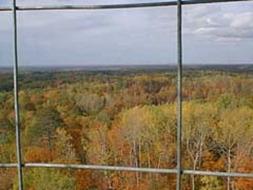

|
Forest Fire Lookout towers in Minnesota have a long history as in other states across the nation. The earliest were "Tree lookouts" , a few of which can still be located in the northern counties. Most of Minnesota's forestry fire lookouts though were constructed during the era of the 3 C's, the Civilian Conservation Corps, a project of Franklin D. Roosevelt's "National Recovery Act" of the 1930's. Thousands of young men were put to work doing projects across the country. Another divison of this was the WPA or "Works Project Administration". In Conservation, hundreds of steel fire towers were erected during this time, many in Minnesota's back woods and rolling farmlands. It was said that at one time, there was a fire tower every eight square miles in the northern counties of the state. State Parks and National Parks were created under Roosevelt's administration, and to guard them were built fire towers. They were operated by CCC boys and later on, most were turned over to the Department of Natural Resources DNR. During World War 2, many were used for aircraft spotting. In the 1930's it was important to keep men at work and off the bread lines. Some towers were taken down from one location and erected at another just to keep men busy. This accounts for many of the existing concrete footings of towers that lay scattered through the thick woods. Many of Minnesota's tall fire towers were of the eight sided or "cupola" style. The cabs were mounted on very tall spider web steel girders, some as high as 130 feet tall, and had vertical rung ladders to climb up. Later ones had a safety cage around these ladders , but early ones had none. Some of these cabs were six sided. The interior of the observation cabs were tiny, with little room for accessories or creature comforts. The construction of these "Cupola" or "Crow's Nest" type towers with their taper design made them very strong and wind resistant. These types are still in use today with the Canadian Forestry Service. Minnesota today uses only a few of these older day lookouts for fire detection, but if you look close when traveling the countryside, you may yet spot one, standing alone on some rolling hilltop. Modern ways of detection and combating wildfire may have passed these old towers by now, but the age when they were first built is part of the history of Minnesota. Steel fire towers were built by many companies, one of the most used variety were models built by the Aermotor Corporation of Broken Arrow, Oklahoma. A maker of windmills and oil derick equipment. The first 1916 Aermotor designs were conical, like windmill frames and were known simply as "windmill fire towers" The next few years, the company specifically designed structures just for Conservation Department use, and a whole range of Fire Tower designs became available to suit. The first Aermotor fire towers were usually shipped to eastern points FOB Chicago and ranged anywhere from $400. to $800. complete. Today that figure would be inflated ten fold. A 1979 Pennsylvania fire tower constructed cost well over $100,000. as built. Often it costs more money to take down one of these old towers than is economically feasible, so many unfortunately have been sold just for their scrap metal value. The fire towers that remain today are glimpses into Minnesota's past, but in many parts of the northeastern United States, the "urban wild land interface" problems are resurrecting the value of these older lookouts. Many have been restored through private initiatives and community spirited projects for use by the public. The search for "Minnesota's Forest Fire lookout history" has been joined by the Forest History Center, Itasca State Park, and the DNR. On-going research on their histories is also done by Chapters of the Forest Fire Lookout Association, a volunteer organization which documents histories and anecdotes of lookouts and their operators. firelookout.org is the website of the FFLA firetower.org is the website of the National Historic Lookout Register by Bob Spear, Forest Fire Lookout Association |
|
The B&W photos below came from Larry Hegstad Region Supervisor, Minnesota Department of Natural Resources, Bemidji, MN. |